The Olympic Trials, is, for many, track geek summer camp. Ensconced in the dorms at the University of Oregon, enjoying three meals, with vegan offerings, and hot coffee, is more than most of us could have expected. Then, there was the nightly visits to the Wild Duck Cafe, the headquarters of fun in the Track Capital of Lane County.
With some two weeks of separation, and my clothes finally unpacked from my large travel case, and also washed, I might add, here are my final five lessons, points, what have you, from our Olympic Trials. I hope you enjoy.
 The 2016 U.S. Olympic Trials, July 1-July 10, 2016, photo by PhotoRun.net
The 2016 U.S. Olympic Trials, July 1-July 10, 2016, photo by PhotoRun.net
Lesson Six: If you present it, they will come!
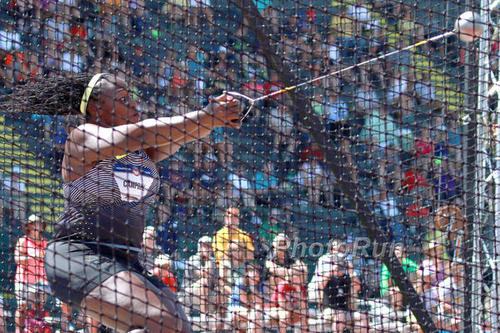 Amber Campbell, hammer throw Champion, photo by PhotoRun.net
Amber Campbell, hammer throw Champion, photo by PhotoRun.net
The hammer throws, held for the first time in the center of Hayward Field, had about 4000 fans celebrating the wonderful weight event. Amber Campbell won the women’s hammer in 74.03 meters or 242-10, on her sixth throw! In the Men’s Rudy Winkler threw 76.76 meters in round 4, 251-10, and won for the men.
About ten days later, the IAAF invited all six throwers to the Olympics, so six U.S. hammer throwers are going to Rio! The fine presentation, the excitement of the crowd and the excitement of the hammer throwers, all showed that, for the second time in a row, the hammer throw added fans to the sport!
Lesson Seven: Emma Coburn is ready to roll!
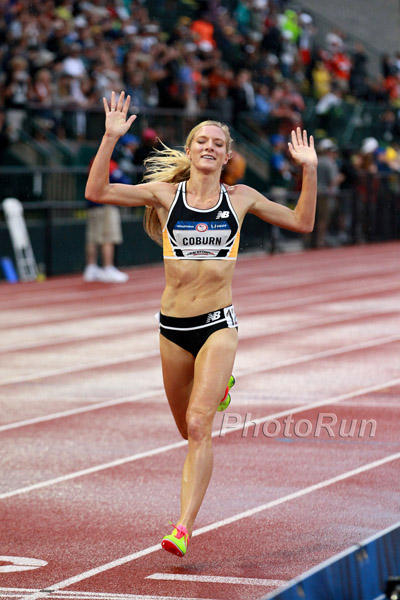 Emma Coburn, her race be won, photo by PhotoRun.net
Emma Coburn, her race be won, photo by PhotoRun.net
The women’s steeplechase final was won by Emma Coburn, with Courtney Frerichs and Collen Quigley, both running the races of their lives, and joining Emma Coburn on the team. Emma Coburn set the new AR of 9:10.74 at the end of May. Her races in Eugene showed one thing, she is ready to race the world and she has ambitions for a medal in Rio. If she can stay healthy, she should be in the battle for silver or bronze.
Lesson Eight: The Olympic Trials is about being the best on your day
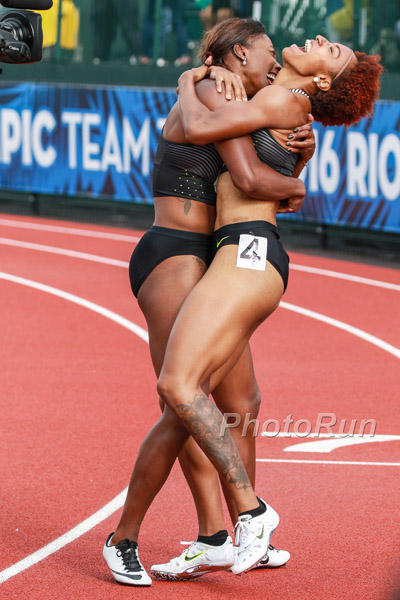 The thrill of victory, photo by PhotoRun.net
The thrill of victory, photo by PhotoRun.net
Keni Harrison finished sixth in the Olympic trials final for the 100 meter hurdles. She had the fastest time going in, with 12.24, and two weeks after the Trials, would break the 28 year old world record, with a 12.20. But, on the day, on the track, at the right time, Brianna Rollins, Kristi Castlin and Nia Ali all went one, two, three in the 100 meter hurdles. The hurdle events for men and women in the US may be the toughest events to make the Olympic team on, and it was proven once again on Day 8.
Lesson Nine: Bernard Lagat has a few more races in him
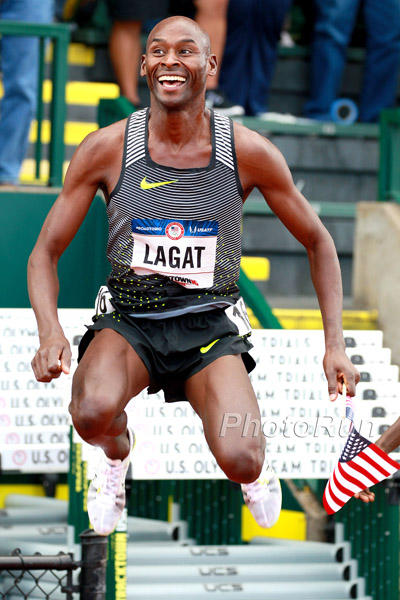 Bernard Lagat hopping for joy! photo by PhotoRun.net
Bernard Lagat hopping for joy! photo by PhotoRun.net
I had never seen Bernard Lagat upset until his 10,000m DNF on July 1. He was not a happy camper. But, the difference, dear campers, between moaning and turning lemons into lemonade was what Bernard Lagat did in the 5000 meters. First, he got through the heats, no problems. Then, he dropped a 52.82 last lap in the 5000 meter final, when the entire field layed down and gave him his perfect set up. Lagat can run hard, and his last 200 meters is world class still, at the ripe old age of 41. After his 13:14.92 on July 22, I think the guy can do anything.
Lesson Ten: Tori Bowie may be onto something
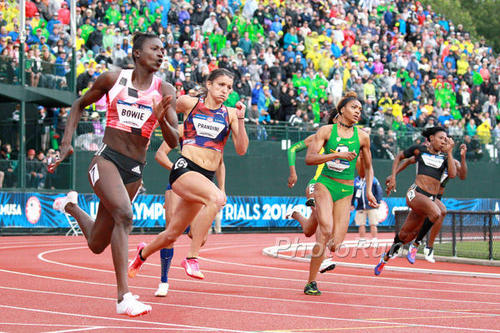 Tori Bowie off the turn, 200 meters, photo by PhotoRun.net
Tori Bowie off the turn, 200 meters, photo by PhotoRun.net
Apparently, Tori Bowie told some media that she wanted to be a dentist before she decided to see how fast she can run. Bowie is one of our most talented athletes, but she has had her good days and bad days. The 200 meters was a great day, as she took control and protected her lead all the way to the finish. Her battle with Dafne Schippers could be the epic race of the entire Olympics!
Honorable Mentions: The 1,500 meter races all delivered! While I might have wanted others to make either teams, both races did honor to their events, our sport and American distance running.
Biggest Worry: U.S. Army-What gives I have to admit that I am quite concerned about the U.S. Army team, which seems to be bringing in athletes from other countries, as if the Army team is it’s own country. I have no issue with athletes immigrating to our country, as many have done, but there are processes that are in place, and I fear that, in 2020, if not controlled, we could not have any athletes who have developed through US programs running middle and long distances.
Author

Larry Eder has had a 52-year involvement in the sport of athletics. Larry has experienced the sport as an athlete, coach, magazine publisher, and now, journalist and blogger. His first article, on Don Bowden, America's first sub-4 minute miler, was published in RW in 1983. Larry has published several magazines on athletics, from American Athletics to the U.S. version of Spikes magazine. He currently manages the content and marketing development of the RunningNetwork, The Shoe Addicts, and RunBlogRun. Of RunBlogRun, his daily pilgrimage with the sport, Larry says: "I have to admit, I love traveling to far away meets, writing about the sport I love, and the athletes I respect, for my readers at runblogrun.com, the most of anything I have ever done, except, maybe running itself." Also does some updates for BBC Sports at key events, which he truly enjoys. Theme song: Greg Allman, " I'm no Angel."
View all posts




















